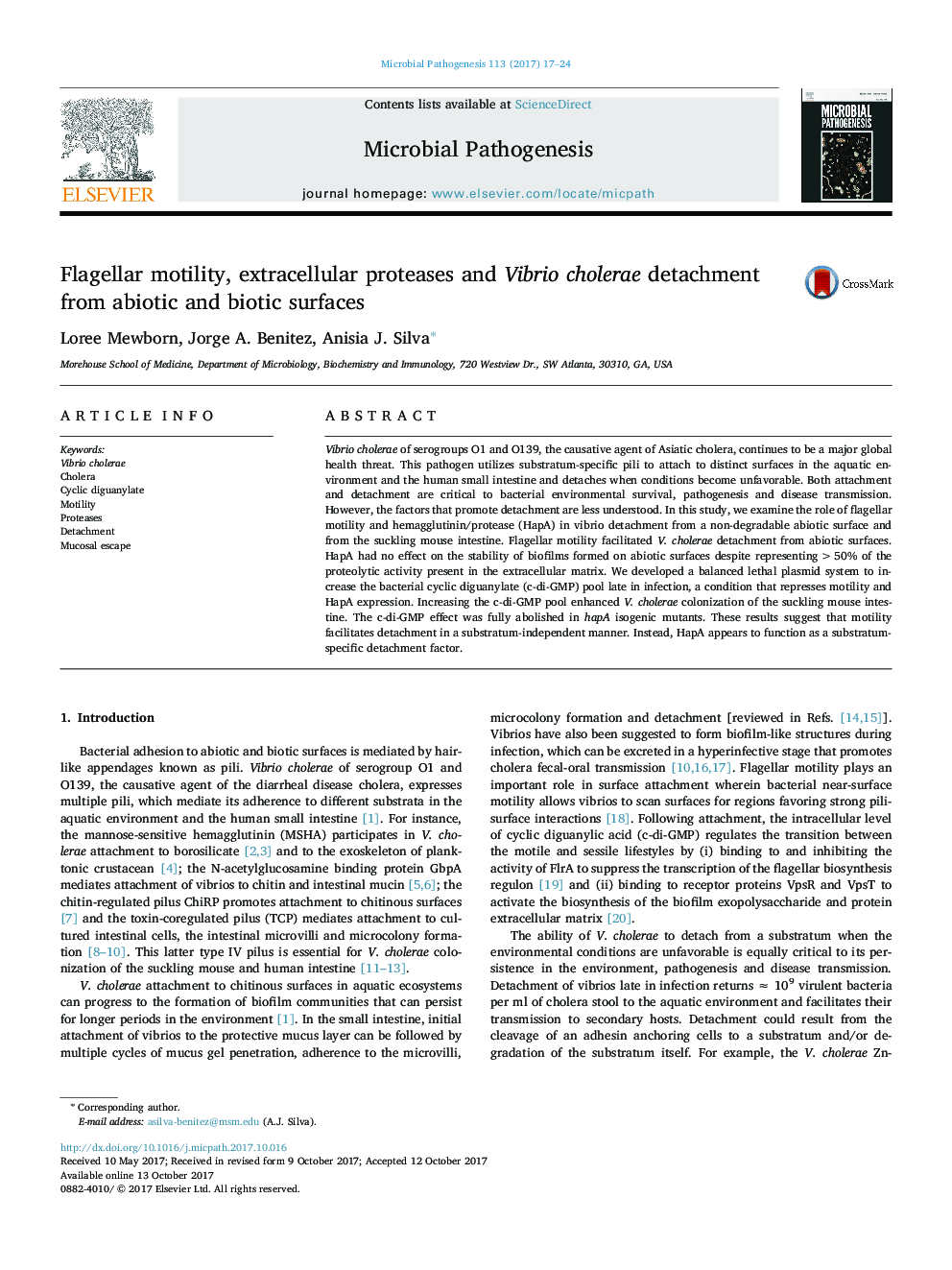| Article ID | Journal | Published Year | Pages | File Type |
|---|---|---|---|---|
| 8749901 | Microbial Pathogenesis | 2017 | 8 Pages |
Abstract
Vibrio cholerae of serogroups O1 and O139, the causative agent of Asiatic cholera, continues to be a major global health threat. This pathogen utilizes substratum-specific pili to attach to distinct surfaces in the aquatic environment and the human small intestine and detaches when conditions become unfavorable. Both attachment and detachment are critical to bacterial environmental survival, pathogenesis and disease transmission. However, the factors that promote detachment are less understood. In this study, we examine the role of flagellar motility and hemagglutinin/protease (HapA) in vibrio detachment from a non-degradable abiotic surface and from the suckling mouse intestine. Flagellar motility facilitated V. cholerae detachment from abiotic surfaces. HapA had no effect on the stability of biofilms formed on abiotic surfaces despite representing >50% of the proteolytic activity present in the extracellular matrix. We developed a balanced lethal plasmid system to increase the bacterial cyclic diguanylate (c-di-GMP) pool late in infection, a condition that represses motility and HapA expression. Increasing the c-di-GMP pool enhanced V. cholerae colonization of the suckling mouse intestine. The c-di-GMP effect was fully abolished in hapA isogenic mutants. These results suggest that motility facilitates detachment in a substratum-independent manner. Instead, HapA appears to function as a substratum-specific detachment factor.
Related Topics
Life Sciences
Immunology and Microbiology
Microbiology
Authors
Loree Mewborn, Jorge A. Benitez, Anisia J. Silva,
